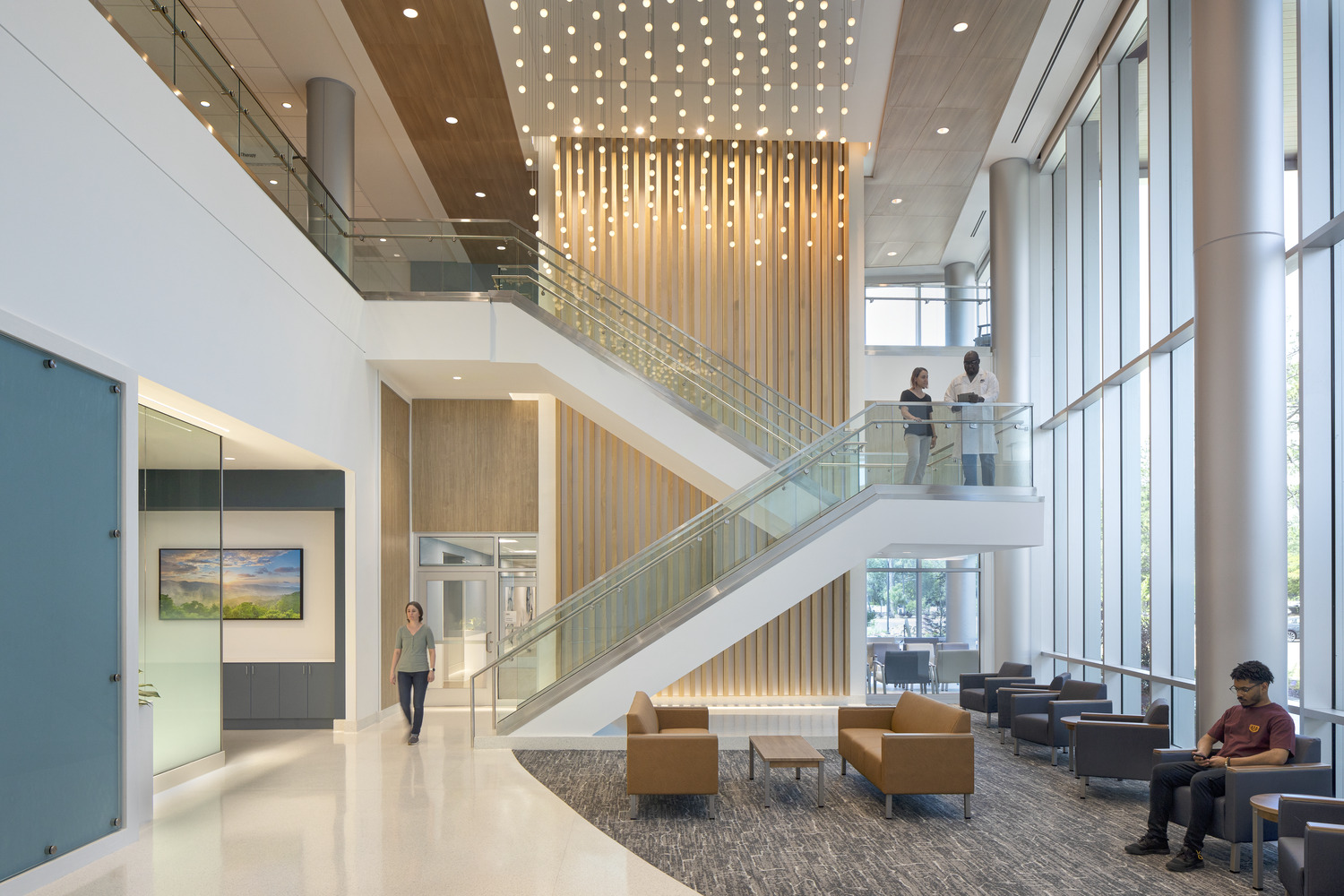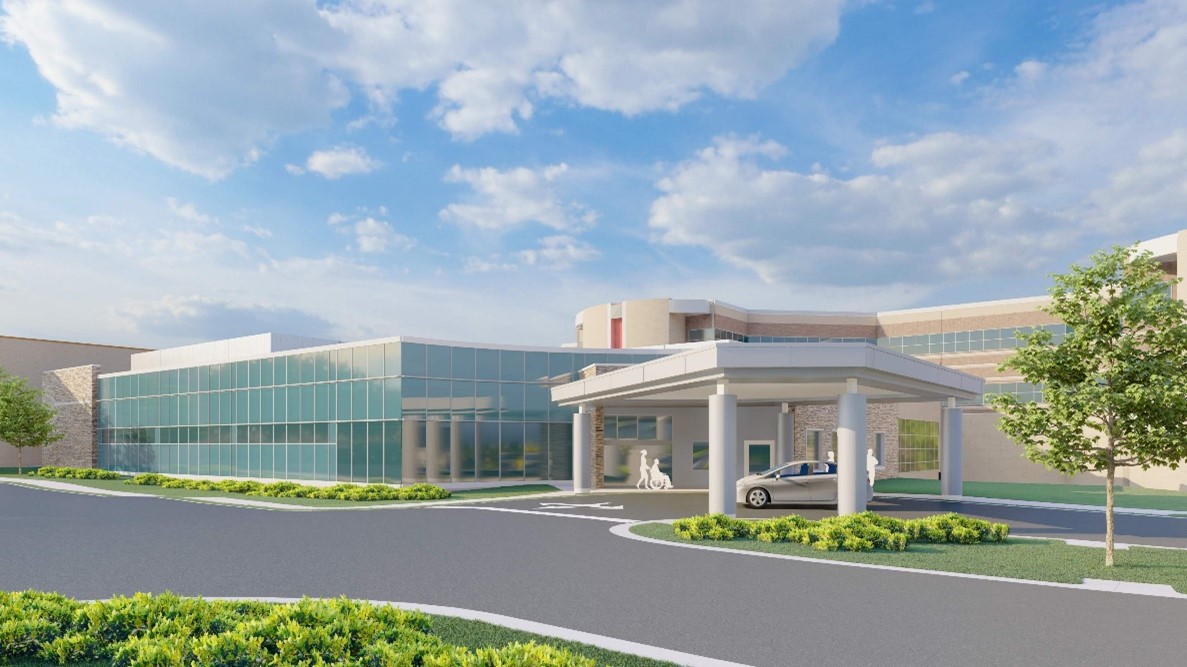In today’s rapidly evolving healthcare landscape, creating life-affirming facilities demands innovative approaches that not only address current needs, but also anticipate future challenges.
Consequently, Integrated Project Delivery (IPD) has emerged as a standout delivery method to minimize risk and waste while optimizing materials, time and effort. Unlike traditional approaches such as Design-Bid-Build (DBB) and Construction Management-at-Risk (CMAR), where stakeholders operate independently, an IPD project brings all parties—designers, contractors and owners—together from its inception.
This fosters mutual trust, transparency and joint decision-making, accelerating speed to market and aiding budget management to provide quicker returns on investment. It also revolutionizes delivery by addressing the myriad hurdles inherent in healthcare projects.
Enhancing Communication to Meet Diverse Needs
Known for their complexity, healthcare ventures often involve multiple stakeholders with unique priorities. Aligning these interests can prove daunting, but IPD projects’ early communication strategy offers an impactful solution.
Involving end-users from the outset ensures that every voice is heard and integrated into the design process: hospital administrators focus on operational efficiency, medical staff provide insights into patient care and patients offer input on comfort and accessibility, all while co-creating with designers and contractors for the best aesthetics and technical outcomes.
Streamlining Protocols and Regulatory Compliance
IPD also provides superior compliance with safety, infection control and accessibility standards by uniting various regulatory experts and disciplines, who work separately in traditional projects, to expedite design and construction.
Because IPD encourages unprecedented owner involvement, project needs are more adequately prioritized over wants. Any design choice not aligned with the project’s guiding principles, established and approved by the owner at the outset, is categorized as a “nice to have.” This reduces time spent on unnecessary designs, focusing on essentials within budget. Moreover, early cost estimation and continual cost management further support budget control and adherence to quality and environmental standards.

To meet the tight project timeline for the FirstHealth Cancer Center amidst the COVID-19 pandemic, we organized discipline-based “cluster groups” to handle standards and budgets for specific components such as exterior skin, MEP, medical equipment and interior design. Regular check-ins between these experts, which included both hospital staff and project team members, facilitated steady progress within the established timeframe, a hallmark of IPD.
Improving Speed to Market through Project Visualization
Today’s healthcare buildings must be constructed swiftly to accommodate mission-critical changes in medical technology, treatment methods and patient needs, and meet population demands. IPD projects therefore emphasize streamlined design ingenuity, flexibility and conflict resolution through Building Information Modeling (BIM) software, which designers use to create detailed visual representations of emerging layouts. Teams can collaborate within these models in real-time, proactively identifying and resolving issues to save time and money.
For instance, if an MEP system’s placement affects construction sequencing, the project’s sub-contractors can intervene and contribute to a solution alongside designers. This contrasts with traditional projects, where changes are made only after the building model is finalized and its feasibility is evaluated by other groups. This real-time coordination guarantees that the final facility meets objectives without compromising project timelines.

In designing the new heart and vascular expansion at ConeHealth Alamance Regional Medical Center, administrators were worried about the unsightly appearance of rooftop equipment. Project team members worked with them to integrate the features into the architecture and minimize costs. Building renderings showcased various options, including prefabricated units with screening walls for camouflage, which were incorporated into the final program.
Key Insights for IPD PROJECT Execution
While adopting the IPD approach can significantly augment project outcomes, successful implementation hinges on careful planning—several practical tactics can help owners navigate this process effectively:
- Set Clear Project Goals. Understanding the project’s objectives helps the team identify key steps to realize the owner’s vision. It’s necessary to define key performance indicators (KPIs) and metrics early as the “north star” to measure success and maintain alignment among stakeholders.
- Champion Transparency. Owners should be open about budgets, contingencies and internal decision-making processes—this enables consultants to understand the project’s financials and rationale, empowering them to better support design and construction efforts.
- Establish a Decision-Making Framework. It’s important to brainstorm clear escalation paths and appoint designated steering committees, with core project champions who will make timely decisions; this structured process guarantees that any issues are promptly addressed, minimizing project disruptions.
- Assemble the Right Team. Administrators should carefully select their project team, seeking designers, contractors and consultants with experience in IPD delivery and shared values. Conflict resolution skills are fundamental for managing design challenges, and building a culture of trust among all stakeholders is paramount, as everyone shares risks and rewards. Additionally, the entire team should establish strong governance structures and align contractual incentives with project objectives to ensure unified efforts towards common goals.
Tomorrow’s Healthcare, Powered by IPD
As medical technology advances, progressive administrators are embracing IPD to create spaces that are equal parts functional, comfortable and adaptable, elevating experiences for doctors and patients alike. With thoughtful planning, this approach can not only help organizations meet fluctuating industry needs, but seize opportunities to influence and even shape the future of healthcare.

